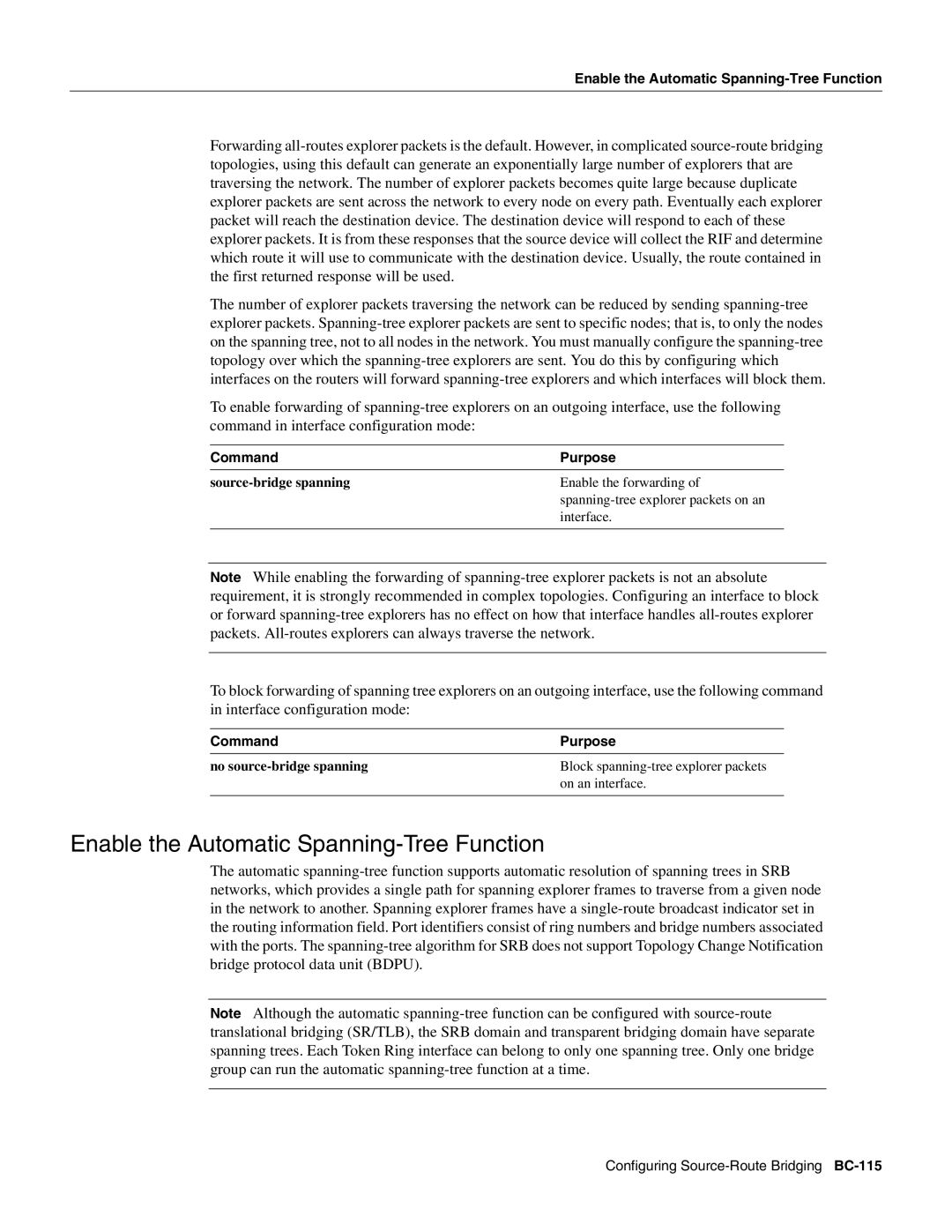
Enable the Automatic
Forwarding
The number of explorer packets traversing the network can be reduced by sending
To enable forwarding of
Command | Purpose |
Enable the forwarding of | |
| |
| interface. |
|
|
Note While enabling the forwarding of
To block forwarding of spanning tree explorers on an outgoing interface, use the following command in interface configuration mode:
Command | Purpose |
no | Block |
| on an interface. |
|
|
Enable the Automatic Spanning-Tree Function
The automatic
Note Although the automatic
Configuring
